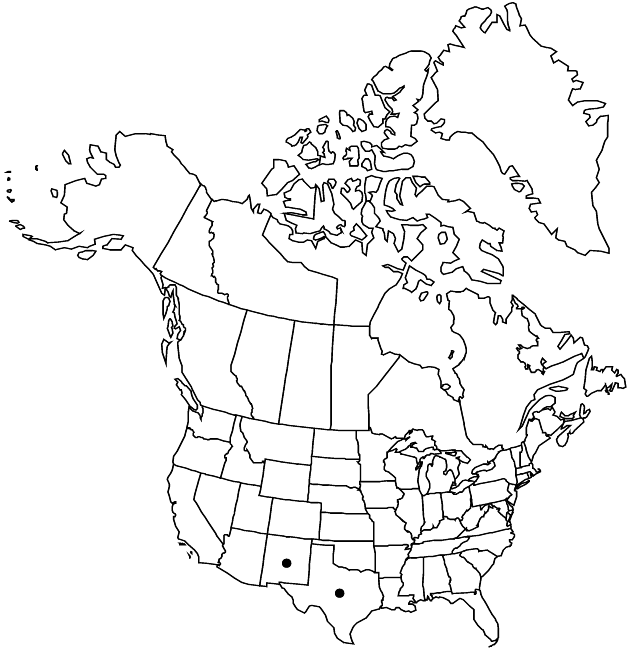Difference between revisions of "Xanthisma blephariphyllum"
Sida 20: 1403. 2003.
FNA>Volume Importer |
FNA>Volume Importer |
(No difference)
| |
Revision as of 18:45, 24 September 2019
Subshrubs, (15–)25–40 cm; taproots 1–6+ cm. Stems 5–15+, often much branched in distal 1/2, moderately stout to stout, not wiry, hispidulous, sometimes minutely stipitate-glandular. Leaves: basal withering by flowering; cauline evenly spaced, oblong to oblanceolate, 15–45 × 4–15 mm, gradually reduced distally, margins evenly, finely or obscurely serrate or serrulate, teeth 12–25 per side, each tipped with white bristle 0.5–2 mm, faces densely hairy, occasionally stipitate-glandular. Peduncles moderately to densely hispidulous or hispid; ebracteate. Involucres depressed-hemispheric, 4–8 × 8–15 mm. Phyllaries in 5–6 series, broadly linear or narrowly lanceolate, 2–7 mm, apices acuminate, often tipped by white seta or bristle, faces densely hairy, stipitate-glandular. Ray florets 20–45; corollas white, tubes 2–3.5 mm, laminae 9–13.5 × 2–3.1 mm. Disc florets 60–120+; corollas 4.6–6.3 mm. Cypselae oblong to obovoid, 2–2.8 mm, 10–18-ribbed, faces moderately whitish to tawny hairy; pappi tawny, 3–5.5 mm, a few abaxial bristles 1/3 length of longest. 2n = 8.
Phenology: Flowering spring–fall.
Habitat: Calcareous soils, rocky slopes or outcrops
Elevation: 1300–2600 m
Discussion
Xanthisma blephariphyllum is known from the White and Guadalupe Mountains of southern New Mexico, and the Sierra Diablo, Glass, and Davis mountains of west Texas.
Selected References
None.
